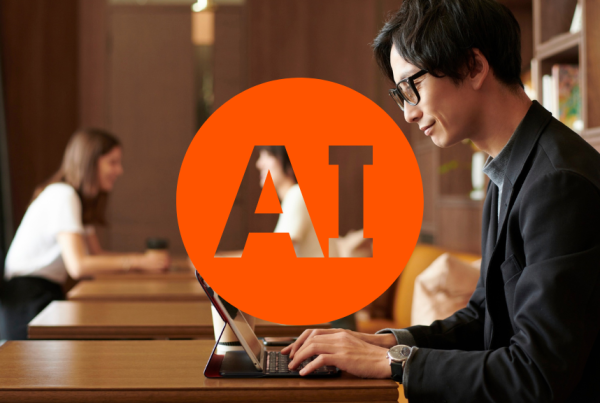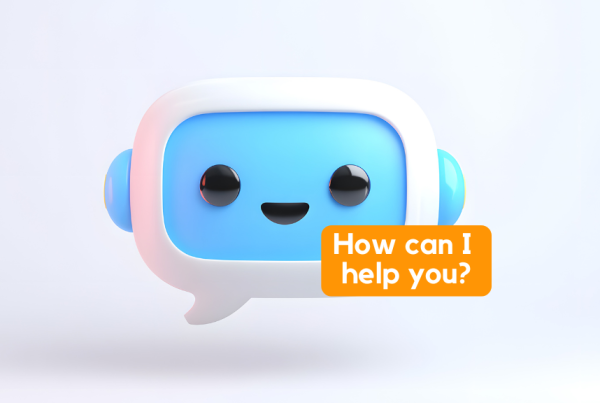If you’ve visited a website recently and chatted with a helpful assistant, gotten personalized product recommendations, or received instant answers to your questions, you’ve probably interacted with AI technology. Artificial intelligence is rapidly transforming how websites work, making them smarter, more helpful, and more personalized than ever before. Two of the most important AI technologies driving this change are AI workflows and AI agents.
What Are AI Workflows?
Think of an AI workflow as a smart assembly line for tasks on a website. Just like a factory assembly line moves a product through different stations where workers perform specific jobs, an AI workflow moves information or requests through different AI-powered steps to accomplish a goal.
For example, when you upload a photo to a website, an AI workflow might automatically resize it, remove the background, enhance the colors, and compress it for faster loading—all in seconds without you clicking multiple buttons. Each step in this process is handled by AI technology working together in a coordinated sequence.
AI workflows are particularly useful because they can handle repetitive tasks that would normally require human attention. They work 24/7 without getting tired, and they can process thousands of requests simultaneously. This means websites can offer services that would be impossible or extremely expensive to provide with human workers alone.
What Are AI Agents?
AI agents are like intelligent assistants that can understand what you need and take action to help you. Unlike simple chatbots that follow rigid scripts, AI agents can understand natural language, make decisions, and adapt their responses based on the context of your conversation.
Imagine you’re shopping on a clothing website and you tell an AI agent, “I need a dress for a wedding next month, something blue, under $150.”
A good AI agent doesn’t just search for blue dresses. It asks follow-up questions about the wedding’s formality, considers the season, suggests complementary accessories, and might even remind you to order soon enough for any needed alterations. It’s having a conversation and providing personalized assistance, much like a helpful sales associate in a physical store.
Customer Support That Never Sleeps
One of the most common applications of AI agents on websites is customer support. Traditional customer service has limitations—human agents need breaks, sleep, and can only help one person at a time. AI agents solve these problems by being available instantly, any time of day or night. For instance, I recently canceled an online subscription via an AI agent through a simple back-and-forth conversation that clarified my intentions.
Modern AI support agents can handle a wide range of customer questions. They can check order status, process returns, answer questions about products, troubleshoot technical problems, and even handle billing inquiries. When they encounter a question they can’t answer, they smoothly transfer the conversation to a human agent, along with all the context of what’s already been discussed.
The best part? These AI agents are getting better at understanding frustrated or upset customers. They can detect emotion in messages and adjust their tone accordingly, offering empathy and patience just like a skilled human customer service representative would.
Personalized Shopping Experiences
AI workflows and agents are revolutionizing online shopping by making it feel more personal and intuitive. When you browse an e-commerce website, AI workflows are working behind the scenes to analyze your behavior—what you click on, how long you look at products, what you add to your cart, and what you ultimately purchase.
This information feeds into recommendation systems that suggest products you’re likely to enjoy. But modern AI goes far beyond simple “customers who bought this also bought that” suggestions. AI agents can now act as personal shoppers, understanding your style preferences, budget constraints, and specific needs.
Some fashion websites use AI agents that can look at photos you upload of your existing wardrobe and suggest new pieces that would complement what you already own. Other platforms use AI to create virtual try-on experiences, showing how furniture would look in your actual room or how makeup would appear on your face.
Content Creation and Management
Websites need fresh content constantly—blog posts, product descriptions, social media updates, and more. AI workflows are increasingly handling these content tasks. They can generate first drafts of product descriptions, suggest blog post topics based on trending searches, and even create variations of marketing copy to test which version performs better.
For websites with massive product catalogs, this is especially valuable. Instead of human writers crafting descriptions for thousands of items, AI workflows can generate unique, SEO-optimized descriptions automatically. Human editors can then review and refine the most important ones while the AI handles the rest.
AI agents also help with content management by organizing and tagging content automatically. They can analyze images to understand what’s in them, transcribe videos, and categorize articles by topic—all without manual effort from website administrators.
Streamlining Internal Operations
Not all AI applications on websites are customer-facing. Many AI workflows work behind the scenes to make websites run more efficiently. These systems handle tasks that website owners and managers used to do manually.
For instance, AI workflows can monitor website performance and automatically optimize loading speeds by compressing images, adjusting code, or redistributing server resources. They can detect and block suspicious activity that might indicate a cyberattack, protecting both the website and its users.
E-commerce websites use AI workflows to manage inventory, automatically adjusting stock levels, predicting when to reorder products, and even setting dynamic prices based on demand, competitor pricing, and other market factors. These workflows can process sales data from multiple channels and update inventory in real-time, preventing the frustrating experience of ordering something only to find out it’s actually out of stock.
Accessibility and Inclusivity
AI agents and workflows are making websites more accessible to people with disabilities. AI-powered tools can automatically generate captions for videos, create audio descriptions of images for visually impaired users, and simplify complex text for people with cognitive disabilities.
Some websites now feature AI agents that can adjust the entire interface based on a user’s needs—increasing font sizes, changing color contrasts, or reorganizing navigation for people using screen readers. These agents learn from each user’s preferences and automatically apply those settings whenever they return to the site.
Education and Training Platforms
Educational websites are using AI agents as virtual tutors that adapt to each student’s learning pace and style. These agents can identify when a student is struggling with a concept and offer additional explanations, practice problems, or alternative ways of understanding the material.
AI workflows in education platforms can automatically grade assignments (especially for objective questions), track student progress over time, and generate personalized study plans. They can even detect patterns that might indicate a student is at risk of falling behind and alert teachers or suggest interventions.
The Future Is Conversational
As AI technology continues to improve, websites are becoming less about clicking through menus and more about having conversations. Instead of navigating through multiple pages to book a hotel room, you might simply tell an AI agent, “Find me a pet-friendly hotel in Portland for next weekend under $200 a night,” and it handles everything—searching options, comparing prices, checking availability, and completing the booking.
This conversational approach makes websites more intuitive, especially for people who aren’t tech-savvy. You don’t need to know where a feature is hidden in a menu system or what exact terms to search for—you just explain what you need in plain language.
Challenges and Considerations
Despite all these benefits, AI workflows and agents aren’t perfect. They can make mistakes, especially when dealing with unusual situations they haven’t been trained on. Privacy is another concern—these systems need data to work effectively, which raises questions about how that information is collected, stored, and used.
There’s also the risk of over-automation. Sometimes people genuinely need to speak with a human, and poorly designed AI systems that make it difficult to reach a real person can be incredibly frustrating.
Conclusion
AI workflows and AI agents are fundamentally changing what websites can do and how we interact with them. They’re making online experiences faster, more personalized, and more helpful. From customer support that never sleeps to shopping assistants that know your style, these technologies are creating websites that feel less like static pages and more like intelligent partners.
As AI continues to evolve, we can expect websites to become even more intuitive and capable. The key will be using these technologies thoughtfully—enhancing human capabilities rather than replacing human connection, and always keeping the user’s needs and privacy at the forefront. The websites that get this balance right will offer experiences that are not just more efficient, but genuinely better for everyone who uses them.




